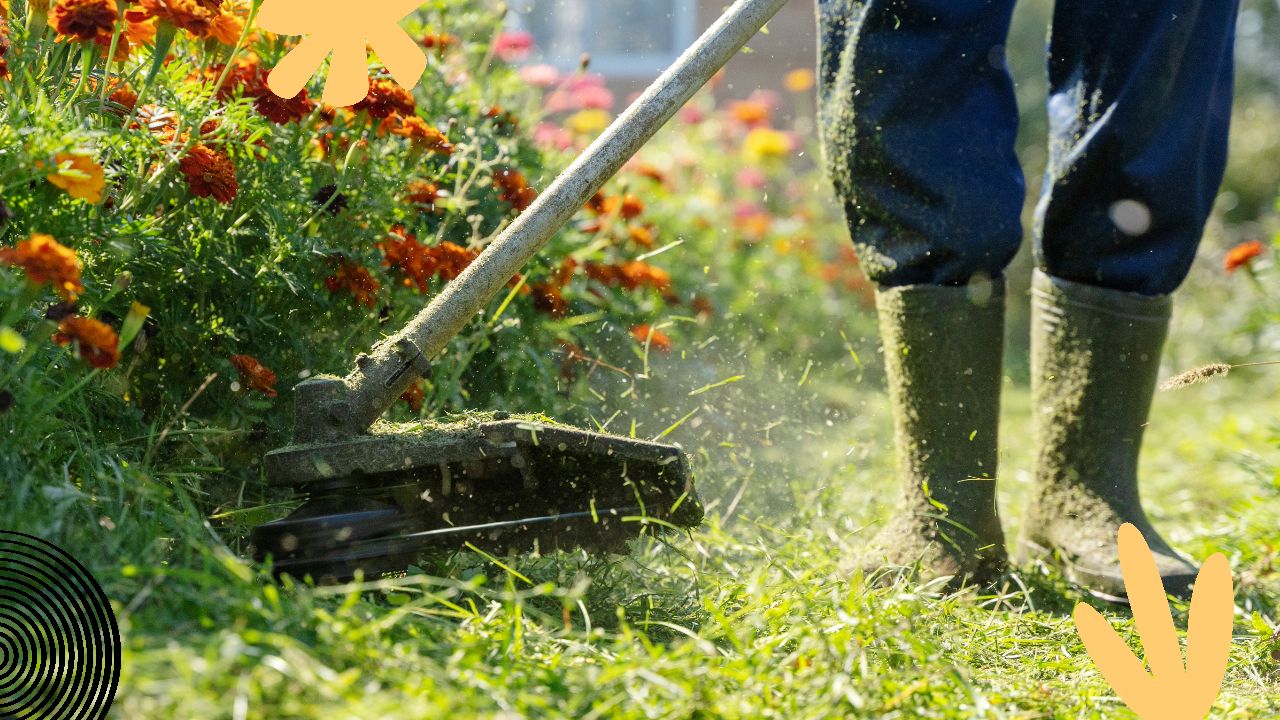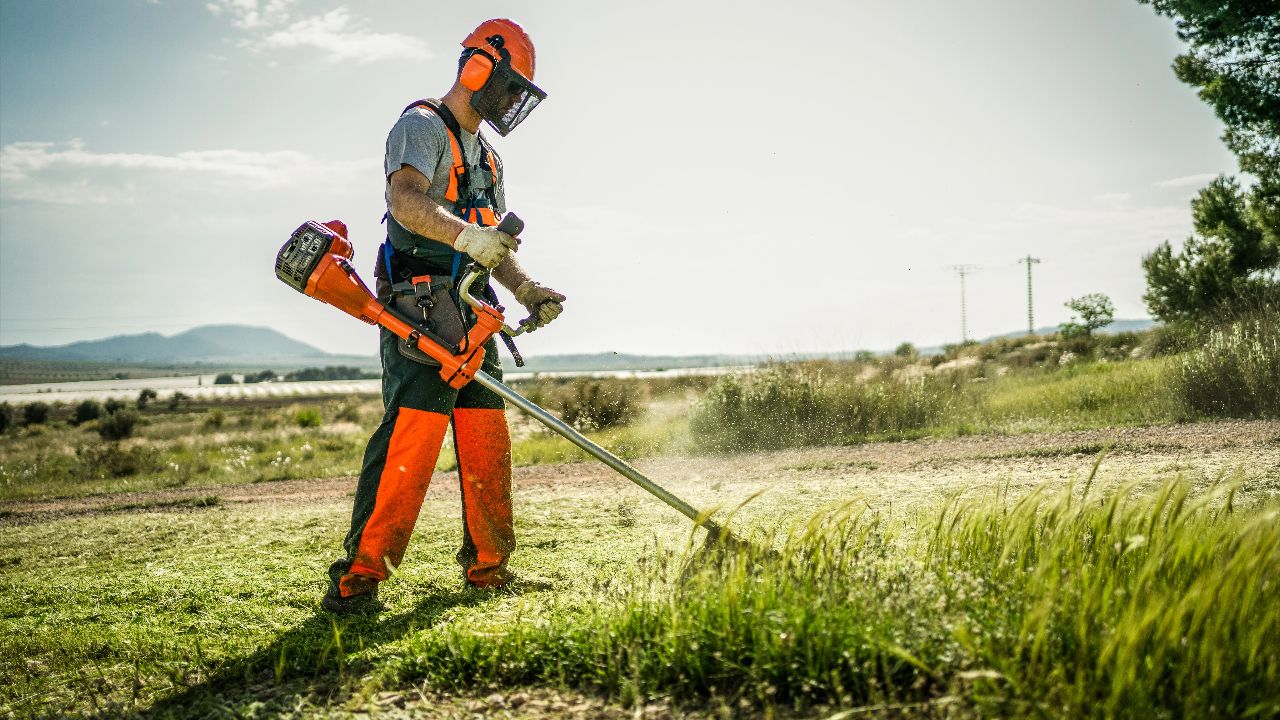
From the vast plains of tall grass that once overwhelmed our gardens to the surgically precise crisp edges of today's lawns, the evolution of the weed eater cannot be overstated. Gone are the days when unkempt lawns dominated the landscapes. Now, whether you know it as a weed whacker, string trimmer, or even weed trimmer, this machine has revolutionized our approach to lawn care.
The weed eater has shifted the perception of manicured lawns from a luxury to an attainable standard. By mastering the art of weed eating, even the thickest grass and most stubborn weeds surrender to its cutting power. As essential as a lawn mower in your yard arsenal, the versatility of the weed eater has made it a must-have for every homeowner. Often undervalued, a professional weed-eating approach ensures that every edge of your garden shines, demonstrating both care and precision.
While some might still cling to their old lawn stand methods, there's no overlooking the unparalleled results a weed eater brings. It's not merely about trimming; it's about redefining what a pristine lawn looks like.
Join our newsletter
Stay on top of the latest in landscaping and lawn care with one valuable tip right in your inbox every Saturday morning.
Why Tame the Tall Grass? The Importance of Professional Weedeating
Imagine a lawn where tall grass obscures the view, where edges are undefined, and the overall appeal is messy. Now contrast that with a lawn where every blade stands uniform, edges are razor-sharp, and the grass exudes health and vigor. That transformation, from untamed wilds to lawn perfection, is the magic of a weed eater.
Employing a professional weedeating approach not only amplifies the aesthetics of a garden but also significantly improves the health of the grass. Regular and precise trimming prevents weeds from stealing vital nutrients and ensures every inch of your lawn receives ample sunlight. A well-kept lawn isn't just pleasing to the eye; it's a testament to the dedication and care invested into the health and functionality of one's yard.

Understanding Your Tools: An Overview of Weed Eaters
In the vibrant world of lawn care, there's a machine that stands tall (or sometimes, elegantly curved) among its peers: the illustrious weed eater. But, did you know that 'weed eater' is just one of many names this tool boasts? Indeed, it's often interchangeably called a weed whacker or a string trimmer. So, what sets them apart? In essence, they all refer to the same fundamental tool designed for the same purpose: giving your lawn that crisp, clean cut around the edges.
Yet, within this category, there's a divergence. You'll find straight shaft and curved shaft versions, each catering to different needs and preferences. The straight design often reaches under obstacles with ease, while the curved variant offers a more ergonomic experience, especially for shorter users.
Choosing the right tool can make all the difference in your lawn care journey. Dive deeper with us as we untangle the nuances of these indispensable garden allies.
Preparation: Setting Yourself Up for Success
When it comes to mastering the art of weed eating, there's more to consider than just the machine itself. Achieving that dreamy, crisp edge around your lawn involves more than a simple press of a button or a pull of a starter cord. Like any significant endeavor, the key lies in thorough preparation.
First and foremost, safety. Remember, a weed eater is a powerful tool, especially the gas-powered variants. You're not just trimming tall grass or tackling thick grass; you're repelling flying debris at every turn. That's why protective gear, especially safety glasses, isn't just a recommendation—it's essential. Before you power on your weed whacker or string trimmer, ensure you've shielded your body from potential hazards.
Now, the gear-up checklist. Whether you've opted for a gas weed eater or a battery-powered one, you'll need more than just the machine. From trimmer line to an extension cord for those electric models, gearing up correctly ensures not just a job well done but also a safe experience. And with a little practice and the right protective gear, you're on your way to achieve professional results, leaving your garden with a clean cut and your neighbors in envy.

The Art of Weedeating
Much like a maestro wielding a baton, the wielder of a weed eater must understand the rhythm, direction, and technique to achieve that symphonic balance between a well-trimmed lawn and preserved plants. Yet, before diving into the dance, there are foundational steps and precautions that ensure both beauty and safety in your yard.
To kickstart your journey, begin by clearing the area. Remove any debris, rocks, and toys. A clean yard prevents unexpected flying debris and ensures your weed eater's trimming line remains intact. Now, starting your weed eater, whether it's a simple press for electric models or a pull of the starter cord for gas variants, is akin to setting the stage.
With your stage set, let's explore some advanced techniques:
- Around Trees and Flower Beds: Trees are the ancient guardians of your garden, and flower beds are its crowning jewels. Use your weed eater in a vertical position, creating a gentle edge that distinguishes these beauties from the mowed grass, ensuring you protect their base and prevent unwanted damages.
- Between Grass and Paved Surfaces: This is where the magic of a crisp edge comes alive. Angle your tool just right, ensuring the trimmer line kisses the edge of the driveway or path, giving a clean-cut separation between green and gray.
- Avoiding Damages and Staying Safe: It's not just about mastering the machine; it's about mastering the terrain. Be mindful of your body's position, maintaining a waist level stance. And always, always wear your protective gear. A little practice goes a long way in ensuring that both you and your garden remain unscathed.
In the end, weedeating is not just a chore—it's an art. With the right technique, practice, and safety precautions, your lawn will not just be a patch of grass, but a canvas showcasing your dedication and skill.
Join our newsletter
Stay ahead of the curve in all things outdoor.
Get the inside scoop on the latest landscaping, lawn care, and fencing trends with 1 actionable tip every Saturday morning.
Advanced Weedeating: Creating vs. Maintaining Edges
Mastery in any art involves understanding the nuances. In the realm of lawn care, distinguishing between weedeating and edging can be the defining touch that elevates your garden from 'well-maintained' to 'meticulously curated'. These two techniques, while related, serve distinct purposes and contribute uniquely to your lawn's aesthetics.
Weedeating is like the touch-up artist of the lawn world. It trims and maintains grass that your lawn mower blade might miss, especially in tight spots or near obstructions. This act ensures uniformity, so your garden doesn't exhibit patches of tall grass amidst a sea of trimmed green.
On the other hand, Edging is akin to a sculptor shaping a masterpiece. It creates clear, crisp edges between your lawn and adjacent surfaces like sidewalks or driveways. When you edge, you're defining the boundaries, ensuring a neat separation that screams professionalism.
Some techniques and tips to remember:
- Weedeating: Keep your weed eater's head angled slightly towards the ground, not too steep. Regularly inspect and replace the trimmer line for optimal results. Use your weed eater after mowing, to catch any missed patches.
- Edging: Use your weed eater in a vertical position, ensuring the string touches the ground at the right angle. Start from a fixed point, like a driveway's end, and move steadily, creating a straight, clean-cut line.
In conclusion, while both weedeating and edging are integral to lawn care, understanding their roles and mastering their techniques separately can be the difference between a good lawn and a garden masterpiece. Embrace both, and watch your yard transform!

Other Uses for Weed Eaters: Beyond the Lawn's Edge
When we think of a weed eater, the immediate visual is that of a handy tool perfecting the edges of a well-mowed lawn. But did you know the versatility of this machine stretches far beyond just keeping your garden's boundaries sharp?
For starters, areas with tall grass, especially on challenging terrains like slopes and ditches, can be a nightmare for the average lawn mower. Here's where your trusty weed eater steps in. With a little practice, it glides through tall and thick grass on slopes, ensuring every inch of your yard looks pristine.
Furthermore, with the right trimmer line or attachment, the humble weed eater morphs into a robust brush cutter, wading through denser foliage with ease. This dual-duty aspect makes it a must-have in your gardening arsenal, providing value way beyond its primary role of trimming and edging.
In essence, the weed eater isn't just an accessory to your lawn care routine; it's an essential tool, multifaceted in its functions and capabilities.
Post-Weedeating Cleanup: The Final Touches
After dedicating time to weed eating, leaving behind clippings and debris diminishes the crisp edge and professional results you've worked hard to achieve. But cleanup isn't just about aesthetics. Grass clippings, when utilized correctly, can rejuvenate your lawn, acting as a natural fertilizer. By giving attention to post-weedeating cleanup, not only do you elevate the polished look of your garden but also harness the benefits of your hard work for improved lawn health. In essence, it's the final touch that seals the deal.

FAQ
Navigating the world of weed eating comes with its fair share of queries. Here, we tackle some of the most frequently asked questions to guide you on your journey to achieving a professional-looking lawn.
Why so many names for the weed eater?
It's interesting how one machine can go by so many monikers. Whether you call it a weed eater, weed whacker, string trimmer, or even whipper snipper in some regions, they all refer to the same versatile garden tool. The variety in names often stems from regional preferences, brand names becoming synonymous with the product (like Weed Eater, which was a brand), or slight variations in design and function.
Do I really need the guard on my weed eater?
Safety first! The guard on your weed eater isn't a mere accessory. It plays a pivotal role in protecting you from flying debris and potential mishaps. It also helps in maintaining a consistent cutting path and ensuring your trimmer line doesn't wear out too quickly. Removing it might seem tempting for a broader reach, but the safety risks often outweigh the benefits.
Tips for an overall professional-looking lawn:
Achieving that professional touch involves more than just the art of weed eating. Mow your lawn regularly, ensuring the mowed grass doesn't get too long. Regular edging around walkways and driveways gives a crisp finish. Don't forget to fertilize and water adequately. Lastly, practice makes perfect. With a little practice and patience, your yard can rival any professional job.
Stepping Back to Admire the Work
After hours of careful attention, the transformation is undeniable. From tall grasses waving without direction to crisp edges that frame your yard, the power of professional weed eating is on full display. It's more than just a job; it's an art form that brings a distinct satisfaction when beheld. As you step back and take in the sight, remember that this is just the beginning. A well-maintained lawn is an ongoing project, a canvas that invites you to refine and improve with each passing season. Embrace the journey, and let the pride in your work be the motivation to keep achieving perfection.
Join our newsletter
Stay ahead of the curve in all things outdoor.
Get the inside scoop on the latest landscaping, lawn care, and fencing trends with 1 actionable tip every Saturday morning.